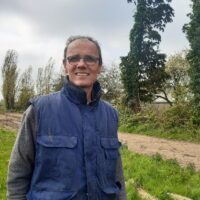Implementation of rotational grazing system on dairy cattle pastures in alpine regions
Elmar FRANCK – Improvement of grassland management
PDF Practice abstract (english)
Description
Practice abstract
On the Laatscher Alm, at an altitude of 2,020-2,350 metres a.s.l, rotational grazing is implemented across 10 paddocks. 58 dairy cows graze on the alpine pasture from the beginning of June to the beginning of September, covering an area of approximately 100 hectares. Minimal external feed is given to the cattle during this period.
To make use of the whole growing season, which has shifted forward due to climate change, the farmer Elmar Frank consistently advances the start of the grazing period each year. This practice challenges the traditional schedule for commencing and concluding the summer alpine grazing season, setting it apart from other dairy pastures in South Tyrol.
Early grazing ensures the optimal use of the first protein-rich grass of the year. The advantage of rotational grazing is that the areas remain free of shrubs, leading to an increase in grass density and more uniformly grazed paddocks.
Despite a significant reduction of forage supplementation in comparison to the previous management, this approach not only ensures a good milk yield but also enhances the overall grass growth and density.
Context profil





Additional information
| Main domain of innovation | Improvement of grassland management |
|---|---|
| Agroclimatic area | Alpine |
| Climate | Little rainfall |
| Soil Type | Sand |
| Management | Pasture dairy |
| Technical | Easy |
| Finance/investment | Low |
| Market | Local-rural |
| Social | Part-time farmer |



